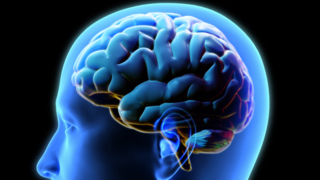In this article:
Normally, CSF travels via ventricles in the brain. CSF acts as a nutrition delivery and waste elimination mechanism for the brain. CSF bathes your brain and spinal cord, protecting and cushioning them against harm. CSF is subsequently reabsorbed into the circulation.
Your body typically produces the CSF it requires every day and then reabsorbs the same amount. However, when the normal flow or absorption of CSF is impeded, CSF may accumulate. As CSF accumulates, the ventricles widen. This generates increased pressure within your head. Too high CSF pressure might interfere with your brain's normal operation.
Types Of Hydrocephalus
There are four primary varieties of hydrocephalus:
Communicating hydrocephalus
It occurs when the flow of CSF is obstructed after it exits your ventricles. This form of hydrocephalus may be caused by arachnoid membrane thickening at the base of the brain. This barrier hinders the free passage of CSF. This form of hydrocephalus is known as communicating because CSF may still flow between your ventricles, which remain open.Obstructive hydrocephalus
It is a common term used to describe noncommunicating hydrocephalus. Non-communicating hydrocephalus develops when the flow of CSF is obstructed along one or more of the tiny tubes that link your ventricles.Normal Pressure Hydrocephalus (NPH)
It occurs when CSF accumulation causes your ventricles to expand with little to no increase in pressure. The distinction between NPH and other kinds of hydrocephalus is that, despite the presence of more CSF than usual, the pressure within your ventricles stays constant. The accumulation of CSF in your ventricles occurs gradually, and symptoms develop over time. NPH occurs most often among the elderly.Hydrocephalus ex-vacuo
It is caused by brain damage following a head injury or stroke. In some circumstances, the brain tissue around the ventricles shrinks. CSF accumulates in your ventricles to fill the additional space. Although your ventricles are enlarged, the pressure in your head is generally normal.When studying hydrocephalus, you may also come across the term ventriculomegaly. Ventriculomegaly occurs when the ventricles of a foetus's brain become enlarged. Hydrocephalus may be the cause of ventriculomegaly; however, there are numerous reasons why this enlargement occurs.
What Causes Hydrocephalus?
Hydrocephalus may occur from a variety of causes. Hydrocephalus may be congenital or acquired.Congenital hydrocephalus is caused by a mix of genetic and environmental factors that arise during foetal development. "Congenital" means present at birth. The main causes of congenital hydrocephalus are:
- Spina bifida and associated brain and spinal cord (neural tube) abnormalities
- Aqueductal stenosis is a narrowing of the tiny tube between the brain's third and fourth ventricles
- Premature birth complications include bleeding inside the ventricles
- Infections during pregnancy, such as rubella, may induce inflammation in the foetal brain
Acquired hydrocephalus occurs at any time after birth and may affect persons of all ages. The most prevalent causes of acquired hydrocephalus include:
- Head trauma
- Stroke
- Tumours affecting the brain or spinal cord
- Meningitis or other infections in the brain or spinal cord
What Are The Symptoms Of Hydrocephalus?
The symptoms of hydrocephalus vary with age. It may also be determined by the stage of illness development. It also depends on how well the individual tolerates the CSF accumulation.Infants may have the following symptoms:
- Unusually big head
- A swollen soft area (fontanelle) on top of your baby's head
- Your baby's eyes are turned downward (sunsetting eyes)
- Vomiting
- Sleepiness
Symptoms in older children might include:
- Headache
- Nausea and vomiting
- Vision issues
- Developmental delays
Adults' symptoms may include:
- Headache
- Nausea and vomiting
- Vision issues
- Feeling exhausted
- Issues with balance and coordination
- Short-term memory loss
Symptoms in older persons might include:
- Walking issues (gait disruptions)
- Mild dementia
- Forgetfulness
- Loss of bladder control
How Is Hydrocephalus Diagnosed?
A neurological assessment is used to diagnose hydrocephalus. Your doctor may utilise brain imaging methods including ultrasounds, computer tomography (CT), or magnetic resonance imaging (MRI).Other tests are often used in adults to diagnose the illness. These tests may include:
- Lumbar puncture (spinal tap)
- Intracranial pressure monitoring (ICP) involves inserting a tiny pressure monitor into your brain to detect pressure
- A fundoscopic examination involves using a specific instrument to visualise the optic nerve at the back of your eye
How Is Hydrocephalus Treated?
Currently, the only option to cure hydrocephalus is via brain surgery. Hydrocephalus is treated using two kinds of brain surgeries:Shunt
The most common therapy for hydrocephalus is a surgical installation of a medical device known as a shunt. A shunt is a flexible tube that is implanted within your brain. It transfers the surplus CSF to another part of your body, where it may be absorbed.Endoscopic third ventriculostomy (ETV)
This operation creates a tiny hole in the floor of your third ventricle. This opens up a conduit for CSF to circulate in and around your brain as it would ordinarily circulate. This surgery is often done on children over the age of two.With surgery and observation, many persons with hydrocephalus may live normal lives. However, the outcome and consequences of surgery might vary widely from person to person. It's critical to collaborate with your healthcare practitioner to obtain the treatment you need.
What Are Possible Effects Of Hydrocephalus Treatment?
Many individuals spend decades without a problem, but things may change rapidly. People with shunts must have frequent medical examinations. Shunts may break, fail, or get diseased. If this occurs, additional brain surgery is necessary. An ETV may shut at any moment, putting a person at risk.If you experience signs of a shunt failure or EVT closure, consult your healthcare practitioner. These symptoms might include those comparable to hydrocephalus, such as:
- Headache
- Vision issues
- Nausea or vomiting
- Feeling exhausted
Alternatively, new symptoms might include:
- Soreness in your neck or shoulder muscles
- Seizures
- Redness or soreness around the shunt
- A low fever
What Is A Likely Outcome For Hydrocephalus?
Hydrocephalus presents a distinct danger to children's cognitive and physical development. Parents of children with hydrocephalus should consult with their healthcare experts to achieve a happy result.It might be unsettling to learn that someone you care about has hydrocephalus. It's vital to realise that you're not alone. Your healthcare practitioner can offer you the necessary tools and resources to care for your family. Your loved one might achieve their aim of living a normal, happy life by remaining educated and preparing ahead of time.
FAQs on Understanding Hydrocephalus: How It Develops and How It’s Treated?
- Can hydrocephalus go away on its own?
No. If not addressed, hydrocephalus may be deadly. Early diagnosis and effective treatment increase the likelihood of a full recovery. - Is hydrocephalus treatable?
Yes. Hydrocephalus is curable. While there is presently no method to prevent or cure hydrocephalus, it may be treated surgically.






